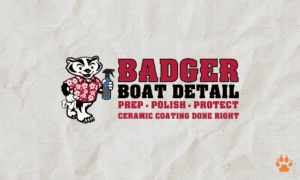By: Kara Tyler-Julian
One of southwest Florida’s lesser-known native creatures is the eastern Spotted Skunk, known scientifically as Spilogale putorius. Most people who live in this area know of this animal’s existence based upon the distinct olfactory experience of smelling their undeniable odor after passing a deceased skunk on the side of the road, but fewer people have actually seen these adorable critters alive in their natural habitat.
This species of skunk is the only species found in southwest Florida and can be differentiated from the more familiar striped skunk by its more elaborate markings with swirling streaks of black and white all over the torso. Additionally, the eastern spotted skunk is a much smaller skunk species, being about the same size as a tree squirrel.
The eastern spotted skunk is considered by the Florida Fish and Wildlife Conservation Commission (FWC) as a “species of greatest conservation need”. This designation indicates that this species is an organism that is most in need of conservation in our state. Their natural habitat includes areas with a lot of vegetative cover and space for den sites, like our palmetto forests complete with gopher tortoise burrows, but these skunks have also adapted to human presence and will venture around our homes at night. You may see evidence of skunks in your yard if you wake up to small holes against your home or at the base of logs or raised bed. These holes are the result of the skunks digging for insects and possibly making a den. While insects are a significant part of their diet, these small mammals are omnivorous and will also eat plants (especially fruits), carrion, and small birds, mammals, reptiles, and amphibians that they catch. This is a great species to have around your home if you are not fond of roaches and rodents, as they love to eat both!
The most notable characteristic of this skunk is of course its defensive strategy of spraying an extremely pungent liquid, reminiscent of burnt rubber (or a certain forbidden herb), at anything or anyone that it perceives to be a threat. It is important to note that spraying a potential-predator with this tear-inducing, nose-burning, odiferous fluid is only done as a last resort. When first faced with a threat, the skunk’s initial strategy is to attempt to escape or hide. Then, if cornered, the skunk will stamp its tiny little feet on the ground in an adorable attempt to intimidate. Finally, if the threat has not dissipated, this tiny gymnast will lift its lower body into the air into an endearing handstand, aiming its hind end towards the enemy, ready to fire its most-foul fluid in the enemy’s general direction.
If you share your neighborhood with these denizens of the palmettos, do not be alarmed. It is possible to coexist with these creatures and enjoy their pest control services without being sprayed. Here are a few tips to avoid a stinky situation with your skunk neighbors: Firstly, don’t leave out garbage or pet food overnight as this will attract skunks and other wildlife. Secondly, give them warning before you exit your house during the night so they have time to scamper away- use bright lights and noises to alert them of your presence, especially before letting dogs out in the dark (I learned this the hard way). Thirdly, you can provide a place for them to run and hide when you come out. A small tube about the size of a downspout works great as a retreat for these little guys. Finally, helping to conserve more of their native habitat will prevent them from being forced into more conflict with humans. Contact East Lee Wildlife Stewardship Group for more tips on coexisting with and protecting our native wildlife.








